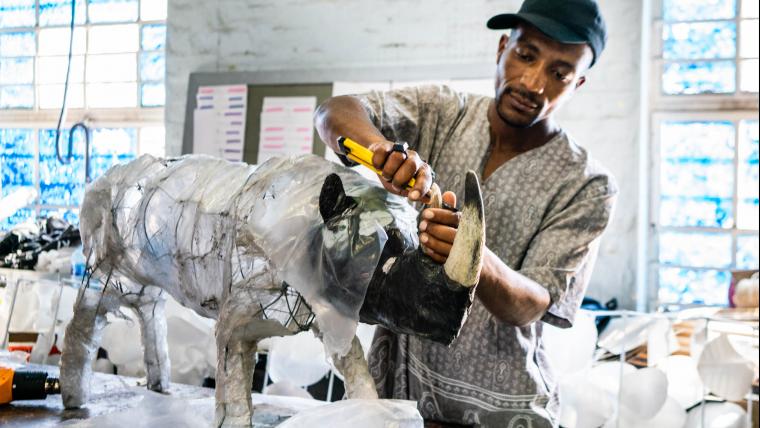
Vandalism? Look again. My graffiti tells a story of hope
The hiss of a spray can adds to the sound of Woodstock’s bustle. Street artist Chad Hanning is painting an animated visual on a once-bland wall. The cartoon figures he creates depict a multitude of feelings and offer commentary on South African politics. Hanning’s creative pursuit is a brave one. In 2010, the City of Cape Town passed a bylaw declaring the presence of graffiti anywhere within its formal jurisdiction a public nuisance. All signs of this expressive act were painted over. But Hanning believes these uniform surroundings don’t represent our vivid rainbow nation. Creating under the name Bushywopp, he’s determined to solidify the importance of street art.
Hanning was initially inspired by the montages of graffiti he’d pass while on the bus to school. They represented people’s everyday experiences. Now, he’s continuing this legacy of taking art out of inaccessible galleries and placing them in the community’s eye. “The reason why this is such a powerful tool of communication is because it’s public and everyone gets to see it,” Hanning says. His animated scenes carry messages that he believes are of social importance, from mental health and adversity, to gangsterism. By recognising graffiti as a legitimate art form, these ideas can positively impact more communities. One project in particular drives this point home.
At the centre of Kensington, dual-toned, shaded graffiti letters declare, “STOP THE CRIME!” Painted last year, Hanning’s artistic collaboration with Interfer remains untouched and untagged to this day. “It was respected by everyone,” Hanning says. “It was respected by the gangsters.” For a form of expression that brings hope is considered vandalism is unimaginable. Through his murals, Hanning is changing perceptions of street art and its community benefits.






























Please sign in to leave a comment